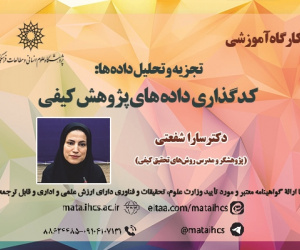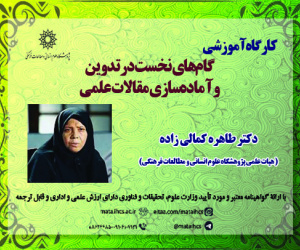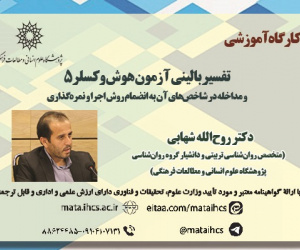بررسی مختصات زیست اهل سنت ایرانی در جمهوری اسلامی ایران (1400-1357) (مقاله علمی وزارت علوم)
درجه علمی: نشریه علمی (وزارت علوم)
آرشیو
چکیده
اگرچه اهل سنت ایرانی یکی از گروه های مذهبی مهم در جغرافیای سیاسی و مذهبی سرزمین ایران هستند؛ بااین حال، بررسی ادبیات مطالعاتی در حوزه فهم نسبت نظام سیاسی و گروه های اجتماعی در ایران، معطوف به فهم کنش های باستان گرایی ناسیونالیستی و متناظر بر مغالطاتی همچون کل نگری و یکسان انگاری است؛ ازاین رو، فهم روشمند مؤلفه های زیستی اهل سنت داخل از مجرای درک گذشته تاریخی و کیفیت رابطه آن ها با نظام سیاسی از موضوعات درخور واکاوی است. با تأملی بر تحولات سیاسی اجتماعی دوره معاصر و نظرگاه های تاریخی، این مقاله درصدد بررسی و پاسخگویی به این سؤال است که وزن و جایگاه اهل سنت ایرانی در ساختار قدرت سیاسی و همچنین، عرصه کنش آن ها با توجه به وجوه تنظیم گرایانه نظام سیاسی جمهوری اسلامی به چه صورت قابل تبیین است؟ با بهره مندی از نظریه «شهروندی چندفرهنگی» و روش تحلیل کیفی اعم از مشاهده میدانی، مصاحبه و تجزیه وتحلیل اسنادی، فرضیه پژوهش چنین است که اهل سنت ایرانی از مجرای برهم کنش های دیرپا و اشتراکات دینی، به نوعی قرارداد اجتماعی در حوزه زیست همدلانه با جامعه و نظام سیاسی رسیدند؛ بااین حال، برخی اختلالات تاریخی درنتیجه فقدان حقوق تصریحی، عدم کاربست قوانین بالادستی و بسط اقدامات دولت مطلقه در دوره پهلوی اول و بازتداوم نادیده انگاری عامدانه در دوره پهلوی دوم، سبب مخدوش شدن رابطه نظام سیاسی و اهل سنت و تراکم شکاف دولت جامعه گردید. نتایج پژوهش نشان می دهد جمهوری اسلامی با سیاست گذاری و توزیع منافع عمومی، به مجموعه اقداماتی به منظور تعدیل شکاف ها، فراهم آوری بستر کنش های متقابل و سامان یابی مشترکات مبادرت نموده و ضمن فهم محدودیت ها و لزوم تخصیص و بازتوزیع منابع در جهت تحقق خیرجمعی، با رویکردی بهبودباورانه، شهروندان اهل سنت را واجد خصلت شهروندی چندفرهنگی نموده است.Investigating the Life Characteristics of Iranian Sunnis in the Islamic Republic of Iran (1979-2021)
Iranian Sunnis, although one of the important religious groups in the geopolitical and religious landscape of Iran, have not received adequate attention in the academic literature on understanding the relationship between the political system and social groups in Iran. Existing studies have mainly focused on understanding the actions of Shia groups, neglecting the systematic understanding of the biological components of Sunnis within the historical context and their relationship with the political system. By reflecting on the political and social transformations of the contemporary period and historical perspectives, the main question of this article is how the weight and position of Iranian Sunnis in the structure of political power and their interactions within the regulatory aspects of the Islamic Republic's political system can be explained. Drawing on the theory of multicultural citizenship by Will Kymlicka, the research hypothesis is that Iranian Sunnis, as an example of multicultural citizenship, have reached a social contract in the peaceful coexistence domain with society and the political system through long-standing interactions and religious commonalities. However, historical disruptions resulting from the lack of declarative rights, non-application of upper-level laws, implementation of collectivist policies, and the expansion of semi-secular government actions during the first Pahlavi period and deliberate neglect during the second Pahlavi have disrupted the relationship between the political system and Sunnis, leading to a widening gap between government and society. From Kymlicka's perspective, achieving multicultural citizenship requires realizing common goods and ensuring legal rights including ethnic rights, representation rights for special groups, and rights to self-governance. Therefore, the Islamic Republic has initiated a series of actions through policymaking and distribution of public benefits to bridge gaps, facilitate mutual actions, and organize commonalities while understanding limitations and the necessity of resource allocation towards achieving the common good. With a constructive approach, it has made Sunnis eligible for multicultural citizenship traits by improving their belief in citizenship.









